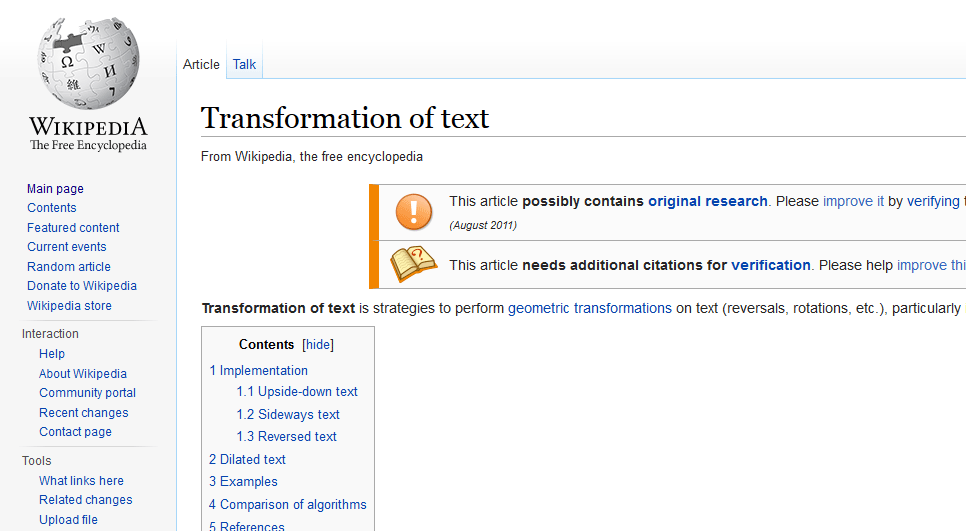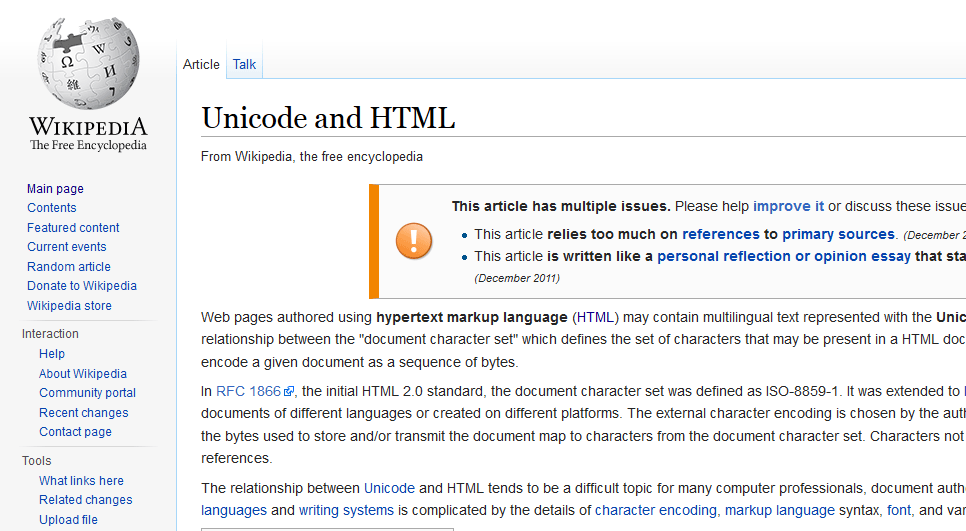Write upside down Mirror your text upside down for fun or to create strong passwords
Description
The upside down generator flips the input text horizontally and reverses it. This is done by analyzing each input character and replacing it by another Unicode character which resembles the flipped version of it.
The text generated can be used either for fun on various online web-sites and chat systems, or to create a strong password: mypassword will become pɹoʍssɐdʎɯ which is easy enough to remember and re-generate using this tool.
Character substitution tables
The following tables shows the character substitution list: each input character is replaced by its flipped version, and vice-versa.
Lowercase characters
| Input character | Flipped version |
|---|---|
| a | ɐ |
| b | q |
| c | ɔ |
| d | p |
| e | ǝ |
| f | ɟ |
| g | ƃ |
| h | ɥ |
| i | ı |
| j | ɾ |
| k | ʞ |
| l | ן |
| m | ɯ |
| n | u |
| o | o |
| p | d |
| q | b |
| r | ɹ |
| s | s |
| t | ʇ |
| u | n |
| v | ʌ |
| w | ʍ |
| x | x |
| y | ʎ |
| z | z |
Upercase characters
| Input character | Flipped version |
|---|---|
| A | ∀ |
| B | 𐐒 |
| C | Ɔ |
| D | ◖ |
| E | Ǝ |
| F | Ⅎ |
| G | ⅁ |
| H | H |
| I | I |
| J | ſ |
| K | ⋊ |
| L | ˥ |
| M | W |
| N | N |
| O | O |
| P | Ԁ |
| Q | Ό |
| R | ᴚ |
| S | S |
| T | ⊥ |
| U | ∩ |
| V | Λ |
| W | M |
| X | X |
| Y | ⅄ |
| Z | Z |
Symbols
| Input character | Flipped version |
|---|---|
| & | ⅋ |
| . | ˙ |
| , | ' |
| [ | ] |
| ] | [ |
| ( | ) |
| ) | ( |
| { | } |
| } | { |
| ? | ¿ |
| ! | ¡ |
| ' | , |
| " | „ |
| < | > |
| > | < |
| _ | ‾ |
| " | „ |
| \ | / |
| ; | ؛ |
| ` | , |
| ‿ | ⁀ |
| ⁅ | ⁆ |
| ∴ | ∵ |
Numbers
| Input character | Flipped version |
|---|---|
| 0 | 0 |
| 1 | Ɩ |
| 2 | ᄅ |
| 3 | Ɛ |
| 4 | ㄣ |
| 5 | ϛ |
| 6 | 9 |
| 7 | ㄥ |
| 8 | 8 |
| 9 | 6 |
References and links of interest

Wikipedia: Transformation of text
Transformation of text is strategies to perform geometric transformations on text (reversals, rotations, etc.), particularly in systems that do not natively support transformation, such as HTML, seven-segment displays and plain text.

Wikipedia: Unicode and HTML
In order to work around the limitations of legacy encodings, HTML is designed such that it is possible to represent characters from the whole of Unicode inside an HTML document by using a numeric character reference: a sequence of characters that explicitly spell out the Unicode code point of the character being represented. A character reference takes the form &#N; where N is either a decimal number for the Unicode code point, or a hexadecimal number, in which case it must be prefixed by x.
